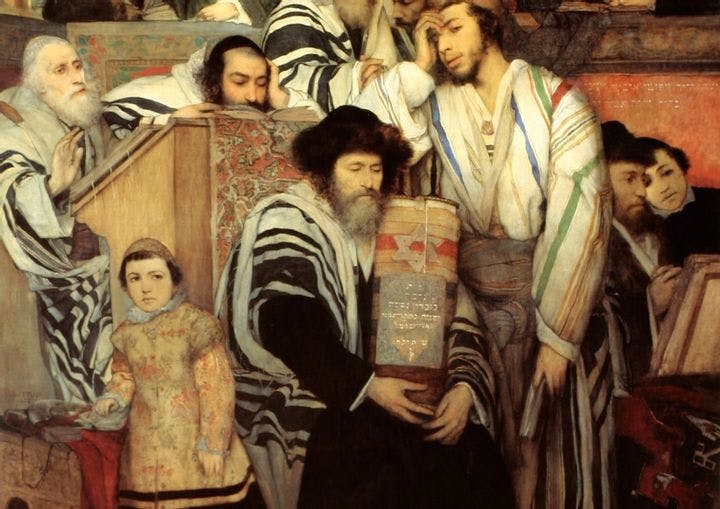Spring 2013
The secret to early Jewish success: literacy
– The Wilson Quarterly
Call it the Jewish Head Start.
When Roman soldiers destroyed Jerusalem’s Second Temple in AD 70, they unknowingly planted the seeds of centuries of Jewish flourishing. The temple’s destruction shifted power within Judaism from the high priests who had governed temple life to the widely scattered rabbis and religious scholars devoted to studying the Torah. Henceforth, every upstanding Jewish man would learn to read the Torah, the scholarly authorities ruled, and Jewish families would send their sons to school.
By learning to read and write, Jews transformed themselves into marketable assets in a largely illiterate world. Maristella Botticini, an economist at Università Bocconi in Milan, and Zvi Eckstein, an economist at Tel Aviv University, say that these skills led the Jews to carve out a lasting niche in finance, trade, and business that brought them wealth and carried them to the ends of the earth.
Judaism’s new requirements cost it dearly at first. Jewish farmers in the Near East had neither the money to learn to read nor much use for the skill. After the destruction of the Second Temple, some converted to Christianity and other faiths that imposed no reading requirement, helping to reduce the Jewish population between the third and sixth centuries AD.
But the literate Jews who endured soon prospered. After the birth of Islam in the seventh century, the Muslim caliphs built a vast empire, boosting urbanization, manufactures, and trade. Botticini and Eckstein note that “almost all the Jews in Mesopotamia and Persia — nearly 75 percent of world Jewry — left agriculture and moved to the cities and towns of the newly established Abbasid Empire to engage in myriad skilled occupations.” There, they manufactured and traded wares, changed and lent money, and worked as physicians. Opportunity took them to Africa, Asia, and especially to Europe, where trade and commerce began to revive in the 10th century.
Wherever the Jews went, they had a leg up on competitors. “They could read and write contracts, business letters, and account books using a common alphabet (Hebrew) while learning the local languages of the different places in which they dwelled.” And they could broker deals with more than just a handshake. Jews made agreements with coreligionists based on Jewish law codified in the Talmud.
Conventional wisdom holds that Jews’ prominent role in moneylending resulted from the Christian church’s prohibition on lending money at interest and Jews’ exclusion from other fields by guilds. But Botticini and Eckstein say Jewish involvement predated both the enforcement of the ban and the rise of the guilds by a century or more. Jews simply enjoyed a competitive advantage in the field.
But Jewish livelihoods were fragile. In 1258, Mongol invaders sacked the capital of the Abbasid Empire, Baghdad; subsequently, much of the empire gradually reverted to subsistence agriculture. Some Jews who fell on hard times converted to Islam and others left, and again Jewish numbers were depleted in the region. In Europe, two centuries of intermittent pogroms beginning in 1290 sent Jews fleeing from England, France, Italy, Spain, and Portugal. Yet they survived and prospered in other lands. “An apparently odd choice of religious norm in the first millennium ... turned out to be the lever of the Jewish economic success and intellectual prominence to come.”
THE SOURCE: “Were the Jews Moneylenders Out of Necessity?” by Maristella Botticini and Zvi Eckstein. Reform Judaism, Spring 2013.
Image courtesy of Wikimedia Commons
